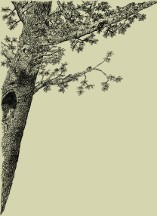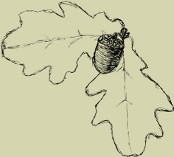42 41 40 39 38 37 36 35 34 33 32 31 30 29 28 27 26 25 24 23 22 21 20 19 18 17 16 15 14 13 12 11 10 9 8 7 6 5 4 3 2 1
Issue 37 (2006)
In this study three organic acids produced, by white rot fungi — Trametes versicolor were identified. The fungi were cultivated on a liquid, mineral medium containing various concentrations of the CuHDO complex. The highest level of acids was observed on the 13th day of the growth cycle. It must be noticed that, in the presence of the copper preservative, the production of organic acids, especially oxalic acid was stimulated.
Key words: copper based preservatives, white rot
The authors investigated changes which occurred in the heartwood of the contemporary oak wood (Quercus sp.) left for two years in wet peat — in conditions in which the remains of the Lusatian culture fortified settlement in Biskupin are deposited. The degree of the degradation of the wood tissue was determined on the basis of the mass loss, some selected physical properties, chemical composition and colonisation of wood by microorganisms.
Key words: physical properties, chemical composition, microorganisms
The performed investigations analysed the chemical composition of Scots pine (Pinus sylvestris L.) wood subjected to thermal modification in the atmosphere of water vapour at the temperature of 190°C and 220°C for the period of 6, 18 and 28 h. The contents of major wood constituents: holocellulose, lignin and pentosans as well as the amount of substances solved in the mixture of ethanol-benzene, hot water, 1% solution of sodium hydroxide and 2% solution of hydrochloric acid were determined. The analyses were carried out for sapwood and heartwood.
On the basis of the obtained results, it was concluded that wood thermal modification caused numerous changes in the cell wall constituents. The percentage lignin content was found to increase together with the increase of the temperature and duration of the process. The content of holocellulose decreased and reached its lowest level during the longest variant of modification. Pentosans turned out to be the least resistant to the effect of high temperature and, hence, their amount decreased significantly.
The content of soluble components, both in the sapwood and the heartwood, declined with the increase of temperature and duration of the process. The only exception was their solubility in hot water where, initially, the amount of these substances increased in wood modified at the temperature of 190°C but decreased when the treatment temperature was increased to 220°C.
Key words: wood, holocellulose, lignin, soluble substances
The paper discussed the effect of the air relative humidity on the development of dimensional hygrostability of corrugated board as well as on its selected strength properties. The degree of deformation under the influence of moisture content was determined as well as the resistance of individual papers and the entire 3- and 5-layer corrugated board to the burst, ETC, FTC and BTC (this measurement referred to boxes made from board).
Key words: water vapour, pulp, paper products, fibres
Mechanical properties of structural-grade oriented strand board depend on the orientation of the sample with respect to the OSB face grain direction. The samples of 12 mm thick OSB/4 cut at 0°, 22.5°, 45°, 67.5° and 90° with respect to the longer OSB sheet edge were tested in static bending by the load applied in the plane of the panel. The modulus of elasticity and the modulus of rupture of OSB/4 were obtained for each type of the sample orientation. The question of the orthotropy of oriented strand boards is discussed.
Key words: oriented strand board (OSB), bending, modulus of elasticity, bending strength, orthotropic
The present paper concerns the evaluation of durability of carpenter’s joints in historic timberwork. The condition of joints in selected medieval roof structures has been assessed taking into consideration first of all the condition of the material within the joints’ area and the correctness of collaboration of surfaces, taking part in carrying the load. In the discussed structures the joints have been preserved in a very good condition, which indicates their high durability and the same time it bears witness to the proper design of the roof constructions. Practical conclusions expressed in the final part of the study should by useful in diagnosing the technical condition of historic buildings and in further conservation procedures.
Key words: historic carpentry, roof, timber constructions, conservation















 Download PDF
Download PDF